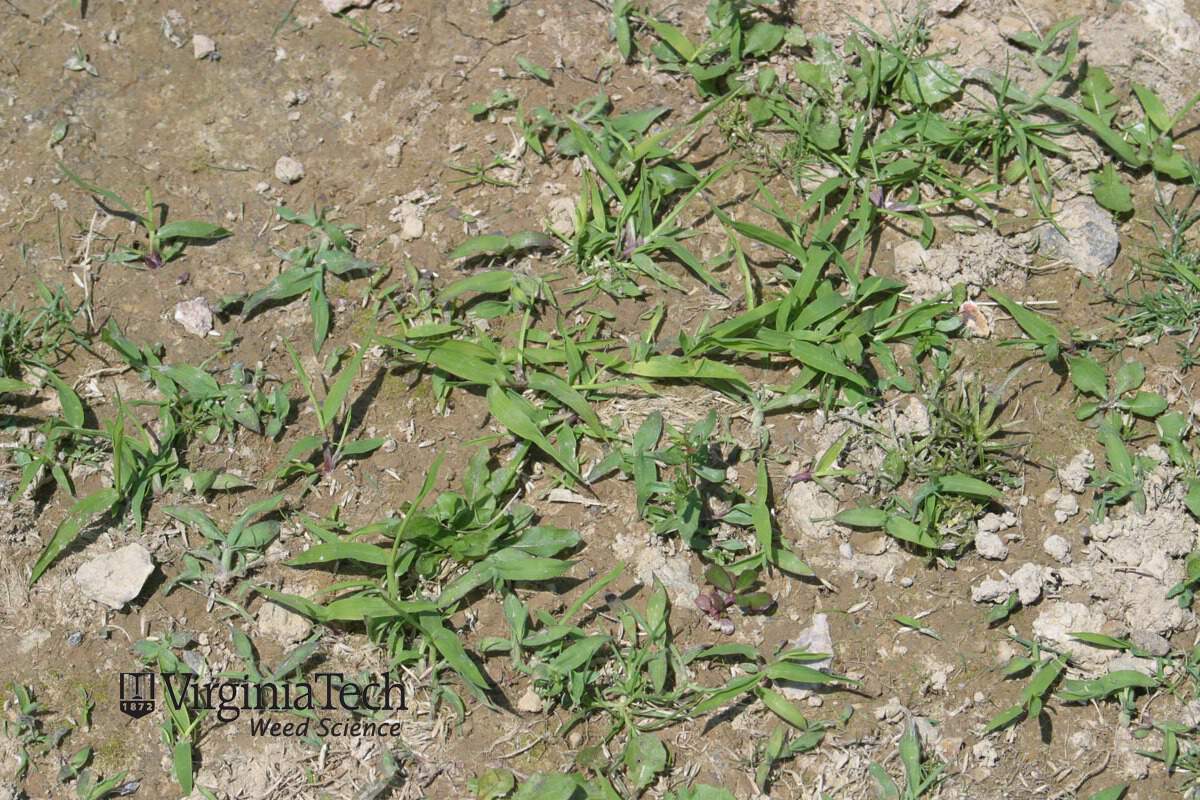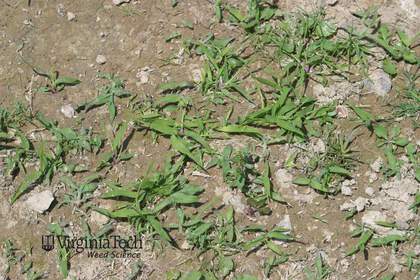southern crabgrass
Family
PoaceaeScientific Name
Digitaria ciliarisOther Common Names:
saulangi
tropical crabgrass
fingergrass
Henry's crabgrass
kukaepua'a
smooth crabgrass
Synonyms (former Scientific Names):
Syntherisma marginata
Panicum adscendens
Digitaria adscendens
Digitaria sanguinalis var. ciliaris
Panicum ciliare
Habit
Southern Crabgrass can grow in any open ground that is sunny, in turf, flowerbeds, etc. It sprouts up in March (as the soil warms up) and grows through to frost (October or November). Southern crabgrass can root from the lower nodes giving it a decumbent habit.
Leaves
Southern crabgrass leaves are around 2-7 inches long and less than an inch wide. The leaves are occasionally pubescent on the upper surface but the sheaths are densely pubescent. This grassy weed has a small membranous ligule with a frayed edge.
Identifying Characteristics
Southern Crabgrass is a valuable temporary summer forage crop, particularly on open land that is planted to vegetables or row crops, and rotated into pasture for livestock grazing or haying.
Flower Seed Head
Seedheads have 2-9 spikelets that are around 1-8 inches long.
Seed Fruit
Seeds are light brown and are less than 1mm wide and approximately 4-5mm long.
Where Found
Southern crabgrass occurs northward on the coastal plain occasionally to Connecticut, more common southward east of the Appalachian region, throughout Florida, extending west into Texas and north into Kansas and Nebraska. Also occurs in the West Indies, Mexico, Central and South America.
Leaf Hair on Upper Surface
Varies:
no hairs,
hairs from base to tip,
hairs on basal half only
Leaf Arrangement
rolled in bud
Mature Leaf Width
Varies:
less than 5 mm,
6 to 15 mm
Stem
flat or oval
Seedhead
multiple spikes
Root Structure
fibrous
Life Cycle
summer annual
Auricle
not present
Ligule
membrane
Ligule Length
Varies:
less than 1 mm,
1-2 mm,
2-3 mm
Plant Type
Grass










